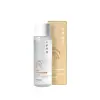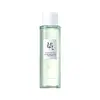What's inside
What's inside
 Key Ingredients
Key Ingredients

 Benefits
Benefits

 Concerns
Concerns

 Ingredients Side-by-side
Ingredients Side-by-side

Water
Skin ConditioningGlycerin
HumectantPropylene Glycol
HumectantNiacinamide
SmoothingPhenoxyethanol
PreservativePolysorbate 80
EmulsifyingBetaine
HumectantTrehalose
HumectantCarbomer
Emulsion StabilisingOryza Sativa Extract
AbsorbentTriethanolamine
BufferingAdenosine
Skin ConditioningSodium Chloride
MaskingDisodium EDTA
1,2-Hexanediol
Skin ConditioningSodium Hyaluronate
HumectantParfum
MaskingWater
Skin ConditioningPrunus Mume Fruit Water
HumectantDipropylene Glycol
HumectantGlycerin
HumectantGlycolic Acid
BufferingButylene Glycol
HumectantTromethamine
Buffering1,2-Hexanediol
Skin ConditioningSalicylic Acid
MaskingHydroxyacetophenone
AntioxidantOctyldodeceth-16
EmulsifyingC12-14 Pareth-12
EmulsifyingEthylhexylglycerin
Skin ConditioningVigna Radiata Seed Extract
Skin ConditioningDisodium EDTA
Xanthan Gum
EmulsifyingMelia Azadirachta Leaf Extract
Skin ConditioningMelia Azadirachta Flower Extract
Skin ConditioningCoccinia Indica Fruit Extract
Skin ConditioningOcimum Sanctum Leaf Extract
Skin ConditioningCurcuma Longa Root Extract
MaskingAloe Barbadensis Flower Extract
EmollientSolanum Melongena Fruit Extract
Skin ConditioningCorallina Officinalis Extract
Skin ConditioningWater, Prunus Mume Fruit Water, Dipropylene Glycol, Glycerin, Glycolic Acid, Butylene Glycol, Tromethamine, 1,2-Hexanediol, Salicylic Acid, Hydroxyacetophenone, Octyldodeceth-16, C12-14 Pareth-12, Ethylhexylglycerin, Vigna Radiata Seed Extract, Disodium EDTA, Xanthan Gum, Melia Azadirachta Leaf Extract, Melia Azadirachta Flower Extract, Coccinia Indica Fruit Extract, Ocimum Sanctum Leaf Extract, Curcuma Longa Root Extract, Aloe Barbadensis Flower Extract, Solanum Melongena Fruit Extract, Corallina Officinalis Extract
 Reviews
Reviews

Ingredients Explained
These ingredients are found in both products.
Ingredients higher up in an ingredient list are typically present in a larger amount.
1,2-Hexanediol is a synthetic liquid and another multi-functional powerhouse.
It is a:
- Humectant, drawing moisture into the skin
- Emollient, helping to soften skin
- Solvent, dispersing and stabilizing formulas
- Preservative booster, enhancing the antimicrobial activity of other preservatives
Disodium EDTA plays a role in making products more stable by aiding other preservatives.
It is a chelating agent, meaning it neutralizes metal ions that may be found in a product.
Disodium EDTA is a salt of edetic acid and is found to be safe in cosmetic ingredients.
Learn more about Disodium EDTAGlycerin is already naturally found in your skin. It helps moisturize and protect your skin.
A study from 2016 found glycerin to be more effective as a humectant than AHAs and hyaluronic acid.
As a humectant, it helps the skin stay hydrated by pulling moisture to your skin. The low molecular weight of glycerin allows it to pull moisture into the deeper layers of your skin.
Hydrated skin improves your skin barrier; Your skin barrier helps protect against irritants and bacteria.
Glycerin has also been found to have antimicrobial and antiviral properties. Due to these properties, glycerin is often used in wound and burn treatments.
In cosmetics, glycerin is usually derived from plants such as soybean or palm. However, it can also be sourced from animals, such as tallow or animal fat.
This ingredient is organic, colorless, odorless, and non-toxic.
Glycerin is the name for this ingredient in American English. British English uses Glycerol/Glycerine.
Learn more about GlycerinWater. It's the most common cosmetic ingredient of all. You'll usually see it at the top of ingredient lists, meaning that it makes up the largest part of the product.
So why is it so popular? Water most often acts as a solvent - this means that it helps dissolve other ingredients into the formulation.
You'll also recognize water as that liquid we all need to stay alive. If you see this, drink a glass of water. Stay hydrated!
Learn more about Water